68 Car Engine Parts with Diagram: A Complete List of Engine Part & Diagram
Hi Friends, do you have any idea about the different parts of a car engine, its diagram or have you seen a car engine, and what it looks like? If you have a car or not, it is mandatory to know all the parts of a car engine. The diagram of engine part is also mandatory to understand the proper position of the same in engine, how it looks, function etc. Let us learn in detail. In this article, we will learn all parts of a car engine along with the basic details, functions, etc. with a simple explanation & diagram.
Car Engine Parts & Diagram: Basic Overview
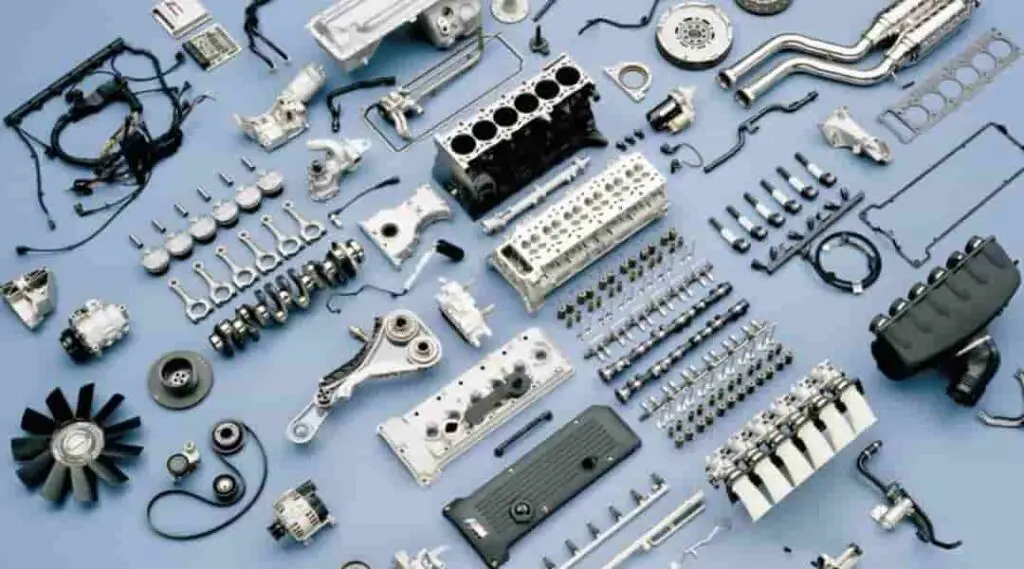
The car engine has various components and together all components it completes its process to drive the car. The engine block is the main base of a car’s engine which houses all parts like the piston, piston rod, piston ring, crankshaft, and many more. Normally a car engine has more than 150 parts for an internal combustion engine and a few of them which are of utmost importance have been captured here.
Car Engine Parts with Diagram
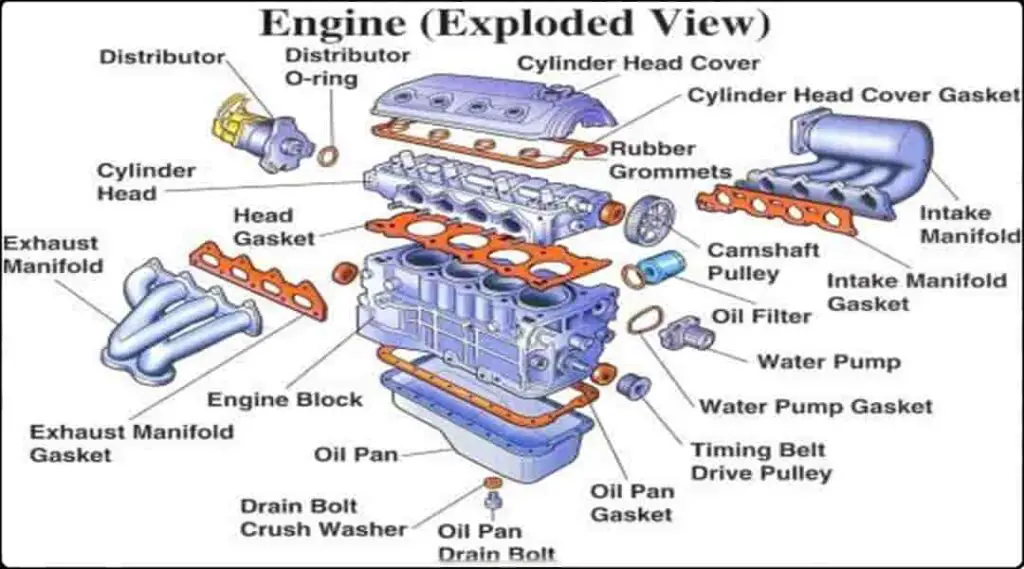
Let us see a simple car parts diagram including all the main parts which are essential to know. Refer to the below car parts diagram so that we can understand the exact location of each one and how it looks.
Car Engine Parts Name
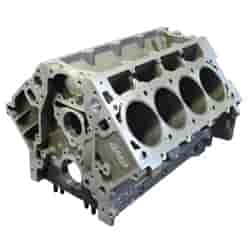
Within an internal combustion engine, an engine block contains the cylinders, as well as other components. Early automotive engines had nothing but a cylinder block attached to a separate crankcase. The crankcase and cylinder block are typically integrated into modern engine blocks. In addition to coolant passages and oil galleries, engine blocks often include other elements.
2. Piston
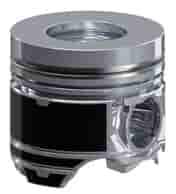
Power is produced by the combustion process of the piston, which is the heart of the engine. From the crankshaft, the flywheel, the power transfer and drive wheel, the piston that moves up and down generates energy. In addition to the flat and convex piston heads, there are several other shapes as well.
3. Piston Rod
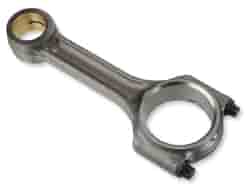
As the main connecting rod between the crankshaft and piston, the piston rod plays a vital role in the engine’s operation. As the piston releases power, the piston rod converts that energy into rotational motion.
4. Piston Ring
Despite being invisible, piston rings play an important role. Piston rings prevent leakage during compression by sealing the piston with the cylinder block. Oil entering the combustion chamber and gases leaking during compression can cause problems for the overall engine. Additionally, the piston ring reduces oil build-up on the cylinder walls.
5. Crankcase or Oil Pan
Crankcases are essential to an engine’s performance. An engine’s crankcase or oil pan acts as a reservoir for engine oil, which lubricates all engine parts. A bolt and gasket prevent oil leakage from the crankcase, located beneath the cylinder block. The crankcase has an oil plug or drain plug.
6. Rotor
The three corners of the rotor seal the combustion chamber from the outside. Additionally, one side of the rotor has internal gear teeth. The gear teeth enable the rotor to revolve around a fixed shaft. There is an inlet or pocket on every face of the rotor, which is installed to allow a greater volume of gas to be injected, thus increasing the displacement rate. At the center of the housing, you will find gears that are attached to the shaft that move the rotor. As a result of those two shafts, the sides are kept in touch with each other so that three combustion pockets remain separate.
7. Housing
A rotor engine is incomplete without a housing, which is an important component. The rotor is designed in an epitrochoid shape, also known as an oval shape, such that the tips are always in contact with the chamber walls. The housing is cleverly outlined as the three tips or corners of the rotor continuously remain in contact with the housing. The intake and exhaust ports are one of the key components which are found within the housing. It is extremely important since each part of the housing completes one of the combustion processes, such as Intake, Compression, Combustion, and Exhaust.
8. Inlet & Exhaust Port
New blends enter the combustion chamber through the intake port, while exhaust gases leave the combustion chamber through the exhaust port. There are intake and exhaust ports in the housing; however, these ports do not contain any kind of valves. There is a direct connection between the exhaust port and the exhaust, while the intake port connects directly to the throttle.
9. Spark Plug

A spark plug sends an electrical current to the combustion chamber, which ignites the fuel-air mixture and causes the gas to expand abruptly. A spark plug completes the ignition system of a gasoline engine. As the receiver of electric current from the output coil, the spark plug is composed of a core or electrode rod and a ground located within the body. An electrode tip has a positive electric charge, while the ground has a negative charge, thus the gap on the spark plug. A spark occurs when electricity exits or jumps to the ground from an electrode if it has a high voltage. Fire is produced by spark plugs in this way.
10. Spark Plug Wire
Spark plug cables differ in shape and capability from common cables. Copper cables with thick insulators are usually made of large diameters. In this case, the spark plug wires will connect the super-high voltage produced by the output secondary coil to the spark plug. Therefore, it is necessary to use a cable with a high level of endurance.
11. Output Shaft
Eccentric cams are mounted on the output shaft; they are offset from the centerline of the shaft. The rotor does not spin in, so you need these eccentric cams for just the shaft rotation.
12. Cylinder Liner
Among the features of a wet liner cylinder block is that its walls may be removed, and they fit in the block using special gaskets. Wet liners are that type of liner that is in direct contact with the engine’s coolant. That is, the liner is entirely of one piece, rather than merely a sleeve.
13. Cylinder Block
Cylinder blocks are structures that contain the cylinder and related components, such as cylinder sleeves and coolant passages. During the early development of internal combustion engines, cylinders were often cast individually. Cylinder blocks were often made separately for each cylinder.
14. Cylinder
There are spaces around pistons where they travel. There are large holes forming a seal alongside the piston and are of precise shape. Considering the size and number of cylinders of an engine, we can determine its power and size.
15. Crankshaft
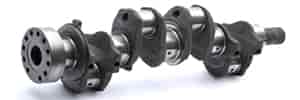
This component is found at the bottom of modern engine blocks, where the crankshaft is housed. There are other components, such as engine mounts, core plugs, coolant, and other mountings and ancillary components.
16. Ignition Switch
Through the ignition switch, the positive pole of the battery is connected to the primary winding of the ignition coil, while the negative pole is grounded. Using this switch key, the ignition system can be turned on and off.
17. Ignition Coil
It acts as a step-up transformer, or raises the battery voltage; this is the most important component. In addition to using two coils to operate, this coil works on the principle of electromagnetic induction. In a secondary coil that has more coils than a primary coil, the voltage can increase when magnetism from the primary coil is absorbed by the secondary coil.
18. Deck
There is a cylinder head on the top surface of the block.
19. Oil Passage
Combined with cylinder heads and crankshafts, these allow oil to be transported to them.
20. Camshaft
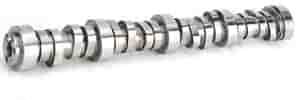
A camshaft can be characterized as a device that converts rotary motion into linear motion and vice versa. In order to achieve a specific displacement, the cam on the camshaft engages in a radial turning pattern, while the follower follows the axis of rotation vertically so that the displacement is achieved. According to the design of the engine, the camshaft’s position varies depending on how it’s mounted
21. Cams in a camshaft
Cams are devices that are designed to transfer the movements required to the followers through direct contact with the cam. There are multiple cams installed on each engine’s camshaft, each of which has its own motor, and in order to install the cam, the valves must be installed first.
22. Camshaft Bearings
A camshaft bearing can be considered one of the most important parts of a camshaft as they are responsible for holding the shafts in the correct position and are also responsible for reducing friction during camshaft operations. There is also an oil inlet on the camshaft which ensures that the oil in the camshaft is always changed in a continuous manner.
23. Bearing journals in the camshaft
There are two types of bearing journals, one that is present in close contact with the followers while the other is a part that rotates on the camshaft. It is a device that transforms the rotatory movements into linear movements by turning them into circular motions.
24. Track Follower in a camshaft:
As the name implies, a track follower is nothing more than a roller or a needle bearing that follows the cam love profile in order to operate, and it is also known as a cam follower. A cam follower can be configured in a number of different ways, but the most important feature is the way in which it is attached to the mating part, which is responsible for the rotation of the cam follower. A yoke cam follower features a hole in its center, whereas a stud cam follower uses a stud as its mounting point instead of a hole.
25. Lobes of camshafts
In order to make the piston move with the camshaft, the lobes rotate with the camshaft. Essentially, the purpose of the lobes of a camshaft is to open and close the valve which allows air to enter and leave the engine. Depending on the speed of the car’s engine, the operation of the lobes directly depends on how fast the engine is going.
26. Bearing Shells
In general, the bearing journals are scaled with a bearing shell that sits on the top of the journal. Bearing shells serve the purpose of smoothing the rotation of a camshaft and protecting the engine against being damaged or shattered in case of an engine failure, by preventing wear and tear of the bearing shell during rotation.
27. Distributor
Distributors are used in conventional ignition systems to determine timing and firing order. An assembly of shafts and cams is used in the distributor to disconnect the primary coil flow. Meanwhile, you will find two major components of the fairing order at the close of the distributor: the distributor cap and rotor. Rotors are conductors that distribute coil output to spark plugs, while distributor caps channel and receive coil output to the rotor from the spark plug wire.
28. Sprockets of the chain
An engine’s timing belt is attached to a chain sprocket at the end of the camshaft for the purpose of retaining it. This sprocket is connected to a chain by means of a pawl. There is no need to touch these sprockets so that they will be able to turn at the same speed even if they are not in contact.
29. Ends
A belt is designed to be attached to the front end of the cam so that it can be connected to the crankshaft by the belt. In order to operate the engine, the rear end of the camshaft is connected to a special gear that turns the distributor. This part is in a position to match the ignition timing of the rest of the engine with the rest of the ignition system.
30. Woodruff key in camshaft
Among the most crucial components of a camshaft is the woodruff key, which is one of its most important parts. In addition to its other purposes, it also serves to ensure that the camshafts move at the desired timings, among its other functions.
31. Centrifugal Advancer
Similar to vacuum advancers, centrifugal advancers change the ignition timing of engines based on their RPM. To prevent knocking and self-ignition, ignition timing must be made earlier when the engine is working at high RPM. Centrifugal Advancers use two weight ballasts that stretch as a result of centrifugal force. To accelerate the platinum open angle, this ballast will be attached to the distributor shaft, giving rise to the centrifugal force in the ballast.
32. Vacuum Advancer
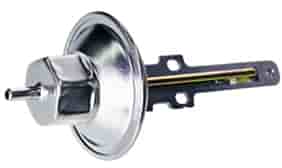
A vacuum advancer is used to advance the spark or change ignition timing. The aim is to adjust the condition of the engine with ignition, for example when the engine is carrying a heavy load. Even when the valve is fully open, this condition will cause slow piston movement. As long as timming remains, it could only inhibit piston rate if the contra effect remains. Approximately 0 degrees of ignition timing will be reversed to maximize combustion expansion for piston compression. By sensing the vacuum in the intake manifold, the vacuum advancer reverses the ignition based on engine load. Suction power on the piston decreases when the conditions above are met, and the contact point shifts more slowly.
33. Thrust Plate in camshaft
It is necessary to have a thrust plate for the rear cam to provide support, and it is mounted up the front cover of the engine and it attaches to the cam between the rear gear and the cam itself.
34. Engine cooling system
The engine cooling system of a vehicle ensures not only that the engine stays cool, but that it’s also kept heated enough for efficient, clean operation. Heat is generated by the explosions that occur within the internal combustion chamber, the cooling system plays a crucial role in this. Temperature in the engine is regulated by the components of the cooling system.
35. Jacket for water absorption
As the name implies, a water shell serves the purpose of absorbing the heat that is generated by the engine evenly and more commonly as a water jacket. The term “water jacket” simply refers to the water channel that is present around the engine, and it is referred to as the water jacket.
36. The radiator of the car
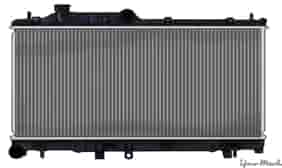
Coolants are cooled by radiators, which are iron-shaped components that are used to cool coolants. Radiators work by moving the temperature from water to free air, and that is the basic principle behind how they work. In the process of cooling coolants, radiators are components that are iron shaped and are used to distribute heat to them in order to cool them. Here’s what the mechanism is, the hot coolant will be channelled to the core of the radiator and it will be cooled by the coolant. Due to the fact that both steel and aluminum are conductors of heat, the heat will move from here to the core radiator as well as directly to the radiator fins. Heat will move into the airflow when there is air flowing through the fins as there is air flowing through them.
37. Upper tank
As the name suggests, it is the upper tank that is used to hold the hot water or coolant that comes from the engine.
38. Lower tank
This is the main purpose of the lower tank to store and transport the cooled coolant back to the engine after it has been cooled.
39. Radiator cores
It is rectangular channels that connect the upper tank and lower tank spaces using a flat channel. In order to determine the cooling power that a radiator is capable of, it is necessary to have the right number of cores.
40. Radiator Fin
There are several cores on the surface of the radiator which are connected by a thin zinc fin. A fin is used to take heat from a core and release it into the air passing through it while at the same time receiving heat from the core.
41. Hoses of radiator
A radiator hose is a hose that serves the purpose of supplying radiator coolant from the engine directly to the radiator and then back to the engine again. The purpose of this part may only be to channel the coolant, but the importance of this part cannot be overstated any longer.
42. Input radiator hoses
It is a radiator pipe whose purpose is to convey high-temperature coolant from an engine to the radiator.
43. Outlet radiator hose
It is a radiator outlet hose that is responsible for carrying low-temperature coolant to the water jacket on the engine, which is then supplied back to the radiator to maintain a constant temperature.
44. Divider radiator hose
This hose can then be used to handily divide fluid from one component to another by passing it through the divider hose.
45. Cap of a radiator
During the operation of the cooling system, the radiator cap serves as a cover for the upper tank radiator and keeps the air pressure within the system under control. The design of this lid is different from that of a bottle cap or other lid because inside this lid there is a pressure regulating mechanism in addition to a number of other components.
46. The thermostat of a car
As the thermostat works, it closes and opens the channels of the water jacket so that they can exit the radiator hose at the output channel. The thermostat is fully closed when the engine is at a low temperature. By doing so, the water jacket is able to keep the coolant circulating within a closed circuit. In order to increase the engine temperature faster, this circulation will be made possible by the coolant being used to circulate heat from the combustion chambers throughout all parts of the engine.
47. Output shaft of a car engine
The engine at the rear of the vehicle will actually have two output shafts, if it is rear-wheel drive. Engine accessories, such as power steering and charging, are driven by one on the front of the engine. From the rear of the transmission, you will see the second protrusion.
48. Crankcase of an engine
Engine crankcases house the crankshaft of reciprocating internal combustion engines. Engine blocks are integrated with crankcases in most modern engines.
49. Traction battery pack in a car engine

This particular part is generally present in modern electrical vehicles and is a very crucial part. A traction battery in an EV delivers electricity to the motor very quickly, providing rapid acceleration and high performance to the vehicle. The construction of EV traction battery packs is critical to understanding traction batteries & the challenges of extinguishing them should they ignite.
50. Water circulating pump
A water pump is a device that has only one function, i.e., it circulates the coolant within the radiator so that it can reach the cooling channel, and that is it. In general, the water pump is located inside the water jacket, causing a flow of water to flow in the water jacket when the thermostat closes, thus helping to reduce engine heat when the thermostat closes.
51. Air Box of a car engine
The air box of a combustion engine is an empty chamber at its inlet. Each cylinder’s intake hose receives air from the outside and feeds it to the intake valve. Air boxes allow one air filter to replace multiples, which reduces complexity. In response to engine emission concerns in the late 1970s, the air box was designed to collect pump gases from the crankcase and the tank air vent and re-feed them to the engine.
52. Engine power control unit
Inverters power the motor, boost converters boost voltage, and DCDC converters lower voltage in this highly efficient PCU. Power is supplied to the motor by the PCU during acceleration by converting battery power from DC to AC.
53. Cooling water reservoirs
A tube through the radiator cap will be used to channel the evaporated coolant into a tube in order to stabilize the air pressure in the radiator. As moisture condenses back into liquid form inside this tube, it will be able to form new condensations. As long as the pressure within the cooling system is vacuumed, the transformed vapor can be re-channeled into the cooling system to be cooled. As a result, the coolant inside the system will not be reduced, which will prevent heat from accumulating.
54. Thermometer of a car
Coolant temperature is measured with the help of a thermometer. There will also be a display on the dashboard of the car which shows the results of the measurements taken. Modern cars are being replaced by engine coolant temperature sensors instead of this thermometer, which used to be present in cars of the past.
55. Waste-gate Valve
Turbocharger boost pressure does not exceed critical pressure by controlling the waste-gate valve. In order to improve fuel efficiency, turbochargers are often used with downsized engines.
56. Indicator in the dashboard
The thermometer still incorporates this sensor in order to determine the amount of coolant in the engine at any given time. By showing the coolant temperature in real-time on the dashboard display information panel, the driver will be able to get to know if the cooling system is malfunctioning, and thus, prevent the engine from overheating.
57. Carburetor
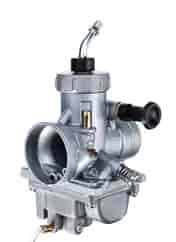
The purpose of a carburetor is to mix fuel with air when the air-fuel ratio for combustion is appropriate for internal combustion engines. If the carburetor is not functioning properly, the engine won’t work right, give the right horsepower, or run smoothly.
58. Carburetor adjustment tool
A carburetor adjustment tool is a type of special-looking screwdriver that is used on An engine’s carburetor adjustment tool controls how much air and fuel are mixed together in an engine carburetor using a special-looking screwdriver. An engine’s idle speed and smoothness can be adjusted by adjusting a screw that is present by using this particular type of screwdriver.
59. Engine Valve
In internal combustion engines, engine valves are mechanical components that allow or restrict the flow of fluid or gas into and out of the combustion chambers or cylinders during engine operation as a result of the engine operating.
60. Check Valve
A check valve may also be referred to as an engine valve, which is a type of check valve used for air injection as part of the emission control and exhaust gas recirculation systems in vehicles as a part of the emission control process
61. Bimetallic engine valves
This valve is made of two different materials called austenitic steel for the valve head and martensitic steel for the valve stem. The two materials are attached together using friction welding to create a valve that contains austenitic steel for the valve head and martensitic steel for the valve stem. In terms of their properties, each of these steels performs a different function with the austenitic steel providing high temperature resistance, corrosion resistance, and abrasion resistance on the valve stem and the martensitic steel for the valve head providing high tensile strength and resistance to wear.
62. Monometallic engine valves
An engine valve that is monometallic is, as its name suggests, made of a single material, which is used to fabricate both the stem of the valve as well as the head of the valve. It is important to note that these types of engine valves are both heat resistant and exhibit excellent anti-friction properties.
63. Hollow Engine Valves
It is important to note that hollow engine valves are unique bimetallic valves that contain a hollow cavity that is filled with sodium as part of its construction. It is believed that when the temperature of the valve head rises, the sodium liquefies and is circulated within the valve when the valve is being operated. Thus, the hotter the valve head becomes, the easier it is to dissipate the heat that has been generated. Since the martensitic material utilized in the stem is more effective at transferring heat through the valve stem than the austenitic material used in the head, the hollow design facilitates greater heat transfer through the stem than solid valves.
64. Induction Motor
In an asynchronous motor, the rotor is forced into rotation by the rotating magnetic field created by the stator, trying to catch up with it. Known for its high power output, this type of electric car motor is commonly used in vehicles.
65. Intercooler
As a result of the intercoolers, fuel consumption is reduced and engine power and efficiency are increased. By reducing the inlet gas’s temperature and densifying the air required, the intercooler optimizes combustion. Inlet gas temperature is lowered from 130°C to 60°C, turbo effects are removed, and around 20% more power is gained.
66. Car Engine battery
The size of a car battery should not be used to evaluate it. Despite being tiny, it is vital to the vehicle’s smooth operation. functions like starting your car, powering the infotainment system, turning on the lighting, etc. The battery in the automobile is charged by the running engine.
The battery gets very strained when you use your car frequently on short trips and stop and start continually. This is especially true in winter when your heater, headlights, heated windows and wipers may work the majority of the time. In order for all the electrical components in your vehicle to function properly, it is necessary to have a car battery to supply electricity to them. Your car will not start without battery power, as you are probably well aware. A car battery charger is designed for the purpose of recharging the battery of your vehicle through the use of an electrical current. In order to recharge the battery, a charger should be placed in the wall outlet, which will draw out AC currents, which in turn will give the vehicle energy again in a few minutes once the charger is plugged into the wall outlet. There is no doubt that the charger is a lifesaver. You can use it easily, conveniently, and within your budget. There are simply too many benefits to using a battery charger.
67. Car Starter Switch
As the name suggests, a car starter which is also known as a self-starter, cranking motor, or starter motor is a device used in the internal-combustion engine to rotate or crank in order to initiate its operation under its own power by rotating. There are three types of starters: electric, pneumatic, and hydraulic. There are even cases when the starter of a large engine can be another internal combustion engine if the engine has a very large fuel tank.
68. Engine mount guard
The engine mount is made up of rubber materials that prevent the engine from rubbing against the frame of your vehicle due to metal-to-metal friction , several manufacturers have started producing liquid-filled mounts, which are similar to shock absorbers and are designed to increase both the dampening effect of the mounts and the vibration dampening. Depending on the application and amount of energy they must absorb, engine mounts can take a variety of forms and designs. Because of this, most engine mounts are relatively small or just large enough for the damping and absorbing of the energy without taking up too much space and, as a result, the mounts are relatively small. In order to construct an engine mount, there are a few parts that need to be assembled.
Conclusion
Hi Friends, I hope we have elaborated the different parts of a car engine, along with diagram, functions. Still, if you feel you have doubt, please feel free to ask so that we can explain further in a better way! Stay blessed, happy reading!
MechStudies Hello Everyone! We, Rituparna Guha & Firan Mondal, are delighted to present our Mechanical Engineering articles. We will capture all types of articles and try to explain in the simplest way with a lot of diagrams! Happy Reading.
Leave a Reply Cancel reply
Recent Posts
Fluid transfer in industrial settings plays a pivotal role in various processes. The need to transfer fluids efficiently, safely, and without leaks is critical to ensure smooth operations. This.
Radar systems are important in many fields, like aviation, marine navigation, weather forecasting, and defense. These systems provide essential information that ensures safety, security, and smooth.
About Us
Hello Everyone! We, Rituparna Guha & Firan Mondal, are delighted to present our Mechanical Engineering articles. We will capture all types of articles and try to explain in the simplest way with a lot of diagrams! Happy Reading.
Legal Information
MechStudies is a participant in the Amazon Services LLC Associates Program, an affiliate advertising program designed to provide a means for sites to earn advertising fees by advertising and linking to Amazon.com. MechStudies also participates in affiliate programs with Bluehost, Clickbank, CJ, ShareASale, and other sites. We are compensated for referring traffic and business to these companies.
Latest Articles
- How To Achieve Leak-Free Fluid Transfer in Industrial Pumps?
- Maintaining Radar Systems for Optimal Performance and Reliability
- Reducing Visual Impact of Mechanical Installations With Camouflage Solutions
- Tube Bending: Mastering the Art of Metal Forming
- Revolutionizing Industries: The Pivotal Role of Servo Drives in Automation
30 Parts of Engine (Car): With [Functions, Diagram, Pictures & Names]
![30 Parts of Engine (Car): With [Functions, Diagram, Pictures & Names]](https://engineeringlearn.com/wp-content/uploads/2023/06/Parts-of-Engine-1024x539.jpg)
30 Parts of Engine (Car): With [Functions, Diagram, Pictures & Names]: – Being familiar with the various parts of the engine and their functions, you can undoubtedly identify which part is causing the issue and you can take appropriate action. Likewise, understanding the parts of an engine can assist you with making informed decisions while buying a car or while deciding on upgrades or modifications.
What is a Car Engine?
A car engine is a complicated mechanism, designed with various internal parts that work as expected to create power that runs your vehicle. All parts should be in good condition for the engine to work appropriately. Cars, one of the essential parts is the engine. Your car engine is comprised of a lot of parts working together to create energy and to make your vehicle go. A portion of the primary parts of a motor is the cylinders, valves, pistons, spark plug, and screws that connect them.
Basically, you have a thick rotating metal part that connects or associates with various cylinders in your car engine. As the rotation of that engine part occurs, pistons will go up and down in the cylinder area of the car.
Parts of Car Engine
Most modern vehicles have somewhere in the range of four and eight cylinders, however, a few vehicles can have as many as sixteen! The cylinders are made to open and close at definitively the right time to bring in fuel to combine with the spark for burning inside and to release the exhaust gases produced. It’s vital to understand what is the role of each part of the car and how they help in driving a car safely.
Below we will discuss each part of the car engine in detail: –
- Engine Block
- Cylinder Head
- Piston
- Camshaft
- Crankshaft
- Flywheel
- Spark Plug
- Connecting Rod
- Combustion Chamber
- Engine Valves
- Timing Chain / Timing Belt
- Intake Manifold
- Exhaust Manifold
- Intake and Exhaust Valves
- Piston Ring
- Gudgeon Pin
- Cylinder Liner
- Crankcase
- Engine Distributor
- Cam
- Oil Pan
- Oil Filter
- Gasket
- Distributor O Ring
- Cylinder Head-cover
- Rubber Grommet
- Camshaft Pulley
- Timing Belt Drive Pulley
- Water Pump
- Oil Pan Drain Bolt
1. Engine Block : ( Parts of Engine )
The Engine block is the essential part of an engine. The Engine Block- otherwise called a cylinder block and contains each of the significant parts that make up the bottom end of an engine. An Engine block contains the primary parts of an internal engine. The Engine block likewise houses the pistons, crankshaft, camshaft, and somewhere in the range of four and twelve cylinders relying upon the vehicle, in a line, otherwise called inline, flat, or looking like a V.
2. Cylinder Head : ( Parts of Engine )
To close the combustion chamber of the engine from the top is the principal role of the cylinder head. The passages in the cylinder head permit air and fuel to flow or stream inside the cylinder while allowing the exhaust gases to stream out of it. The upper part of the engine is known as the cylinder head, while the lower part is the engine block. The cylinder head sits on the engine and deters the combustion chamber.
3. Piston : ( Parts of Engine )
The Pistons assist or help in the transformation of heat energy into mechanical work as well as the other way around. It moves up and down inside the cylinder to expand and contract the air-fuel combination. The Piston likewise plays out various other significant tasks, for example, It seals the combustion chamber. The Purpose and motivation behind the piston is to stand the gases expansion and further send it to the crankshaft.
4. Camshaft : ( Parts of Engine )
The camshaft may either be located within the engine block or in the cylinder heads, which varies from one vehicle to another vehicle. The role of the camshaft is to direct the timing of the opening and closing of valves and take the rotary or revolving movement from the crankshaft and transfer it to up and down motion to control the movement of the lifters, moving the push-rods, rockers, and valves.
5. Crankshaft : ( Parts of Engine )
An engine crankshaft runs inside the base end of a car’s engine and converts the upward movements of the pistons into horizontal rotational movement, which at last drives the wheels by means of the gearbox. Like how a jack-in-the-box works, the crankshaft transforms the piston up and down motion or movement into a proportional motion or movement, at engine speed. The crankshaft is attached or connected to the engine by large bearings at one or the flip side. It connects with the flywheel, and through that, the clutch.
6. Flywheel : ( Parts of Engine )
The torque provided by the engine isn’t uniform and is fluctuating in nature. On the off chance that a vehicle continues moving with this fluctuating power. It will make tremendous discomfort to the rider and furthermore, it will diminish the life of its various parts. Consequently to manage the issue of fluctuating load a flywheel is utilized. A flywheel is by and large mounted on the camshaft.
7. Spark Plug : ( Parts of Engine )
To start your vehicle you need some electricity, hence Spark plugs ignites the combustion which is needed at that time. Spark plug emits or discharges an electrical jolt across a small gap igniting the fuel and air combination that gets the piston going in a motion and makes your vehicle ready to run. As a matter of fact, without properly working spark plugs, your car without a doubt wouldn’t have the option to run at all.
8. Connecting Rod : ( Parts of Engine )
The part of a piston engine that connects or interfaces the piston to the crankshaft is known as an connecting rod. The Connecting rod changes over the linear up-and- down movement of the piston into the roundabout motion of the crankshaft and is in this manner subject to tension, compression, bending, and clasping. On the crank pin of the crankshaft, the connecting rod is mounted, with a plain bearing.
9. Combustion Chamber : ( Parts of Engine )
A Combustion Chamber is the area inside the cylinder where the fuel/air combination is lighted. As there is compression in the piston the fuel/air combination and it further connects with the spark plug, the combination is further combusted and pushed out of the combustion Chamber as energy. The cylinder houses a considerable lot of the significant parts of the internal combustion engine including the Injector nozzle, Piston, spark plug, combustion Chamber, and others.
10. Engine Valves : ( Parts of Engine )
Engine valves are mechanical parts that are utilized in internal combustion engines to permit or confine the progression of fluid or gas to and from the combustion chambers or cylinders during the operation of the engine. Practically, they perform much the same way to numerous different sorts of valves in that they block or pass flow, in any case, they are simply mechanical devices that interface with other engine parts, for example, rocker arms to open and shut in the right sequence and with the right timing.
11. Timing Chain / Timing Belt : ( Parts of Engine )
A Timing belt, timing chain, or cam-belt is a significant part of an engine that synchronizes the rotation or turn of the crankshaft and the camshaft so the engine’s valves open and close at the legitimate times during every cylinder’ intake and exhaust strokes. The belt is made of heavy-duty rubber with gears to hold the pulleys from the camshaft and crankshaft. The chain, similar to your bike chain, wraps around pulleys with teeth.
12. Intake Manifold : ( Parts of Engine )
The Intake Manifold, likewise referred to as the inlet manifold, distributes air to the engine’s cylinder, and on numerous cars, it additionally holds the fuel injectors. Frequently an intake manifold holds the throttle valve (Throttle body) and a few different parts. The intake air flows through the air filter, intake boot, then, at that point, through the Throttle body, into the intake manifold plenum, then through the runners, and into the cylinders. Intake manifolds are typically made using aluminum or cast iron, albeit a few cars utilize plastic manifolds.
13. Exhaust Manifold : ( Parts of Engine )
The Exhaust Manifold is entrusted with collecting the exhaust fumes generated by an internal combustion engine and conveying them toward the catalytic converter or turbocharger. It is connected to exhaust valves. Its construction is equivalent to the inlet manifold. The exhaust manifold carries exhaust gas and plays a similar role in both petroleum and diesel engines.
14. Intake and Exhaust Valves : ( Parts of Engine )
Intake valves are opened to permit the progression of an air/fuel combination into the engine’s cylinder before compression and ignition, while exhaust valves open and close the outlet for exhaust gases. By virtue of Petrol engines, air, and the mixture of fuel enters through the delta valve. Yet, in diesel engines, just air enters through the intake valve. The exhaust valve in both cases is intended for letting exhaust gases out.
15. Piston Ring : ( Parts of Engine )
The Piston rings act to carry or divert heat from the hot piston into the cooled cylinder wall.
The primary elements of cylinder rings in motors are:-
- Sealing the combustion chamber so there is negligible loss of gases to the crankcase.
- Further developing transfer of heat from the piston to the cylinder wall.
- Keeping up with the appropriate quantity of oil between the piston and the cylinder wall.
- Regulating and Controlling engine oil utilization and usage by scraping oil from the cylinder walls back to the sump.
16. Gudgeon Pin : ( Parts of Engine )
A Gudgeon pin, otherwise called a wrist pin, is a significant part of an internal combustion engine. To create a connection between the connecting rod and the piston, Gudgeon pin is utilized. Gudgeon pins can likewise be utilized with connecting rod and wheels or cranks.
17. Cylinder Liner : ( Parts of Engine )
A Cylinder is fitted to the engine block to form or shape of the cylinder and is one essential function part that forms the interior of the engine. The cylinder liner is likely going to wear from the rubbing action of the piston rings and piston rigs, at the time of usage. This wear is limited by the thin oil film which coats or covers the cylinder walls and furthermore by a layer of glaze that normally forms as the engine is run in.
18. Crankcase : ( Parts of Engine )
The central component of the engine is known as the crankcase.The crankcase is, basically, the casing for the entire crankshaft mechanism inside the internal combustion engine. It’s the largest part of the engine, however should be designed to be areas of strength for both and light. In most present- day engines, the crankcase is integrated into the engine block. The pistons, connecting rods, and cylinders are the crank mechanism parts which all are hold by crankcase.
19. Engine Distributor : ( Parts of Engine )
An engine distributor is an enclosed or encased rotating shaft utilized in spark-ignition internal combustion engine that have mechanically timed ignition. The distributor’s essential function is to direct electricity from the ignition curl to each ignition coil with flawless timing. But in numerous modern-day computer-controlled engines that utilize crank angle/position sensors, the distributor likewise houses a mechanical or inductive breaker switch to open and close the ignition coil’s primary and essential circuit.
20. Cam : ( Parts of Engine )
These are an integral part of camshafts. In view of cams, a camshaft is known as a camshaft. To control the inlet and exhaust valve timing, cams are basically mounted ion the camshaft.
21. Oil Pan : ( Parts of Engine )
Another important and essential part of a car engine is oil pan. The oil pan is attached or joined to the lower part of the engine and holds the oil that will be circulated or flowed through parts of your engine to keep them greased up or lubricated, which reduces friction, so everything works without a hitch and forestalls damage. There is a gasket between the oil dish and the motor block which helps in preventing the leakage of oil.
22. Oil Filter : ( Parts of Engine )
Your Car’s oil filter eliminates waste, as well. It captures harmful debris and jetsam, soil, and metal pieces in your engine oil to keep your car’s engine moving along as expected. Without the oil filter, harmful particles can get into your engine oil and damage the engine. Filtering out the junk implies your engine oil stays cleaner and longer.
23. Gasket : ( Parts of Engine )
A gasket is a ring or sheet composed of a supple material utilized in static applications to seal joints, flanges, and other mating surfaces to forestall leakage.
Below are various kinds of gaskets for the most part utilized in an engine: –
(a) Exhaust Manifold Gasket
The Exhaust manifold gasket is a kind of gasket that contains metal and different materials where best seal is provided. It is the principal gasket in the exhaust system and is vital for forestalling leaks.
(b) Oil Pan Gasket
Oil pan gaskets are built and worked to endure a lot of heat and pressure. They’re made of durable materials, like steel, alongside an aluminized seal with a rubber coating or covering. It’s bolted to the engine and is located in the base part of the engine block. The oil pan gasket is a seal or separator that keeps oil from leaking or spilling out, and hence plays a vital part to forestall any sort of leakage or spillage.
(c) Water Pump Gasket
A water pump gasket functions as a seal between the engine and the water pump to forestall leaking or spilling and is essential to the cooling process. Assuming your engine starts to leak coolant, you must get your gasket replaced as soon as possible to forestall further damage to your engine.
24. Distributor O Ring : ( Parts of Engine )
Distributors regularly utilize an explicitly sized O-ring that fits on the distributor’s shaft to seal it with the engine referred to or alluded to as the Distributor O-ring. The Distributor O-ring simply seals the distributor housing with the engine to forestall oil leaks at the base of the distributor.
25. Cylinder Head-cover : ( Parts of Engine )
Cylinder head covers effectively serve to seal off the cylinder head space from an external perspective of the engine. In view of the operational activity of the internal combustion engine, Blow-by gases from the combustion process and oil drops from the lubricant system of the engine are accessible within the cylinder head.
26. Rubber Grommet : ( Parts of Engine )
Rubber grommets are utilized to safeguard or cover holes and decrease vibration. Inserting or embedding a rubber grommet will assist with eliminating sharp edges and safeguard the engine valve to pass through a hole. The rubber grommet will assist with protecting the valve from any kind of damage.
27. Camshaft Pulley : ( Parts of Engine )
A cam pulley is essential and fundamental for the timing system in an engine used to control the pace or speed of rotation of the camshaft, the part that controls the poppet valves liable for air intake and exhaust in the cylinders. The cam pulley effectively with the timing chain to rotate or pivot the camshaft in synchronicity with the crankshaft.
28. Timing Belt Drive Pulley : ( Parts of Engine )
The Timing belt Driven pulley is one of the essential part of car’s engine. It plays a significant part in keeping the piston from striking the valves, in an interference engine. A Timing belt is typically a toothed belt with comprises of teeth on one or either side of the surface. The teeth or pockets apparently of the pulley are not used for power transmission. Crankshaft belt pulleys are utilized when two shafts should be precisely connected or associated for homogeneous pivot.
29. Water Pump : ( Parts of Engine )
The water pump pushes coolant from the radiator through the coolant system, further into the engine and back around to the radiator. The heat that the coolant got from the engine is further transferred to the air at the radiator. If there is no water pump in car engine, the coolant simply sits in the system. Nowadays, Modern water pumps are considerably more strong, however there is as yet an chance it could fail after numerous years or miles.
30. Oil Pan Drain Bolt : ( Parts of Engine )
The oil drain plug is typically located on the lower part of the engine on the oil pan. It is utilized to drain the oil out of your pan during an oil change. In the event that you notice a leak at the oil plug, at times it very well may be basically as simple as replacing the gasket. In the event that the bolt or oil skillet has been cross-strung, you might require another oil drain plug. Now and again, an oversized oil drain plug will cut new threads to assist you with trying not to replace the entire oil pan.
Conclusion
The engine is the core of your car. It keeps it alive and running. Car engines might appear to be complicated, yet their task is simple, to propel your vehicle forward. With such countless parts working together to create this motion or movement, your vehicle should get appropriate maintenance to ensure its life span. Regularly scheduled oil changes, fluid flushes, and changing belts and hoses at the prescribed time is an extraordinary method for forestalling the unfortunate situation of a failed engine.
Image Source: – partsofacarengine
68 Car Engine Parts with Diagram: A Complete List of Engine Part & Diagram
30 Parts of Engine (Car): With [Functions, Diagram, Pictures & Names]
